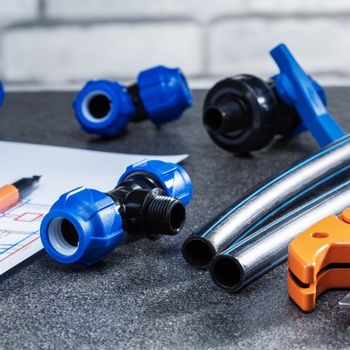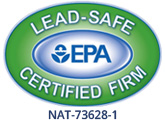Do Plastic Pipes Affect Water Quality?
 As communities across the country address the health hazards of lead pipes, replacing this older material with copper or plastic looks like a logical option. Yet concerns about plastic pipes have emerged, including potential for chemicals to leach into the water and the effects of natural disasters.
As communities across the country address the health hazards of lead pipes, replacing this older material with copper or plastic looks like a logical option. Yet concerns about plastic pipes have emerged, including potential for chemicals to leach into the water and the effects of natural disasters.
Research has produced mixed results based on material type, including PEX and PVC. Here’s what you should consider as you debate having plastic pipes installed.
PEX Pipes
A European study examined the potential effects of cross-linked polyethylene (PEX), a material associated with a particular odor. Some people believe the odor indicates potentially carcinogenic chemicals are tainting the drinking water passing through these pipes. The odor itself comes from the additives included during production to give PEX specific properties.
Researchers found that while PEX pipes can affect how water tastes and smells, exposure to volatile organic compounds (VOCs) wasn’t significant enough to be associated with health risks. However, this doesn’t mean that substances don’t leach into the water. Researchers found traces of 2.4-di-tert-butyl-phenol and methyl-tert-butyl ether (MTBE) in the supply studied.
Other research has found that toluene, a substance for which the EPA has established drinking water limits, can enter the water supply several months after installation. After a certain period, PEX can also potentially harbor microbial growth, sediment and debris.
PVC and HDPE Pipes
Polyvinyl chloride (PVC) and high-density polyethylene (HDPE) pipes are expected to replace lead service lines over the next decade and compose up to 80 percent of all pipes in the U.S. by 2030.
Compared to metal pipes like copper, these materials are associated with the following issues:
- Leaching: As plastics break down, some of their chemicals enter the water supply over time.
- Permeation: Substances present in groundwater and soil can pass through the pipe walls and affect water quality. This may include gasoline, solvents and VOCs.
- Extreme Heat: Natural disasters like wildfires can melt pipes, causing damage and toxic chemicals like VOCs and benzene to enter the water supply. This can result in water containing up to 8,000 times more carcinogens than recommended and cause the chemicals to remain in the local water supply. Exposure can result in immediate skin and throat irritation, headaches and dizziness.
Related to these concerns, additional factors emerge:
- Exposure to UV rays can cause PVC pipes to soften and degrade, releasing chemicals into the air and water supply.
- Water passing through PVC and HDPE pipes at room temperature experiences a degree of leaching; higher temperatures increase the release of plasticizer compounds.
- The glue-based solvent used to secure PVC pipes can also release solvents into the water.
- Older PVC pipes – manufactured and installed before 1977 – present more of a health concern than newer materials.
- Concerns about microplastics are still being examined in relation to drinking water systems.
Uses for Plastic Pipes
These factors influence where and how plastic pipes are installed, including frequency of use, if the pipes will pass through an area storing gasoline or waste, or if the pipe will be flushed first. As a result, PVC is not recommended for pipes carrying potable water, while plastic in general is not used in areas directly exposed to UV rays, heat and waste.
Homeowners concerned about exposure to certain compounds from plastic pipes are recommended to install a reverse osmosis filter. These help remove phthalates and other large-molecule compounds.
If your home has older lead pipes, explore plumbing alternatives with MJ Fahy & Sons. To learn more, contact us today.




